2000 Amelia Earhart Society Symposium Part I
To my knowledge, the 2000 Amelia Earhart Society Symposium was the last time the AES got together as a group. This document, compiled by Bill Prymak from a lengthy email by Irene and John Bolam, appeared in the March 2000 edition of the Amelia Earhart Society Newsletters and is the only record I have of that event.
You won’t find any significant answers in this piece, which is offered for your entertainment more than anything else. As you will see, by 2000, a number of the older, disparate characters in the Amelia Earhart Society were devolving, and strange ideas and weird scenarios were sometimes favored over hard facts. This did not enhance the reputation of the Amelia Earhart Society, but this strange bunch never had a strong public image or projected a unified message. Several of its members, however, such as Joe Klaas, Joe Gervais, Rollin Reineck and Bill Prymak were relatively well known and had long established themselves through their writings and research — not always accurately.
This article is presented in its original newsletter format; photos are added by this editor unless specified. This is the first of two parts.
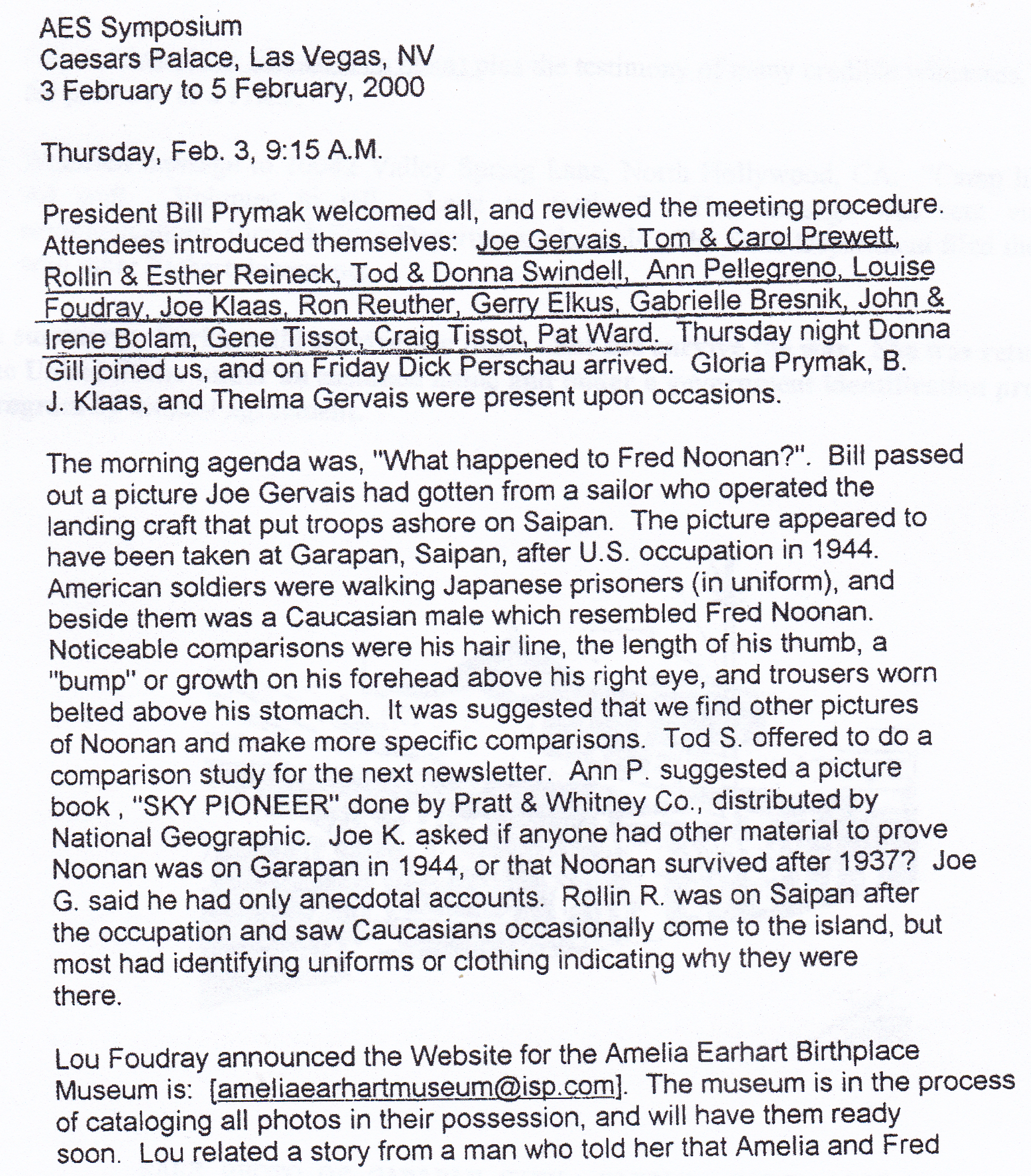

Louise Foudray, former director of the Amelia Earhart Birthplace Museum, circa 2004. Photo courtesy Alex Mandel.


Undated photo of Ron Reuther in front of the Western Aerospace Museum in Oakland, California, where Amelia Earhart’s plane was kept prior to her 1937 flight. Reuther was a founding member of the Amelia Earhart Society, and was a committed naturalist who directed the San Francisco and Philadelphia zoos, among others. (Photo by Lea Suzuki, San Francisco Chronicle.)


Joe Gervais, the father of the Earhart-as-Bolam theory, and Joe Klaas, his right-hand man and author of Amelia Earhart Lives, in a typical news photo from 1970, when Amelia Earhart Lives was creating an international sensation.

Carol kept his manuscript. Joe asked to read it and she refused — saying she was going to publish it. (End of Part I.)
Did Amelia Get Lost On The Wrong Day?
Thanks again to William Trail, today we bring you more entertaining and (mostly) informed speculation from the late Col. Rollin C. Reineck (U.S. Air Force, retired), who wrote several popular articles for Air Classics magazine.
We return to Air Classics, May 1994, for Reineck’s “Did Amelia Get Lost On The Wrong Day?”
To bring more realism to the article, we present the original pages as published, photocopied and sent by Mr. Trail. Some may be hard to read, but if you left click on each page, it will enlarge and you can easily read it, especially with another left click to make it even bigger.
For more background, see Air Classics, October 1993: “Inside the Earhart Flight: Government Conspiracy?.”
For a complete collection of Rollin Reineck’s stories you can find in this blog, please click here.
Comparison of TIGHAR vs AES witnesses circa 1999
Today we return to the recurring and off-putting topic of The International Group for Historic Aircraft Recovery (TIGHAR), as always with an eye toward educating the laggards who may yet harbor any slim beliefs that this opportunistic bunch has ever made any credible claims about the disappearance of Amelia Earhart.
This article appeared in the October 1999 edition of the Amelia Earhart Society Newsletters, and is presented in its original format. This is just a snapshot of AES President Bill Prymak’s mind circa October 1999, and nothing resembling any comprehensive summary of TIGHAR’s claims at that or any other time is being advanced in this post. You can click on each image for a larger, clearer view.
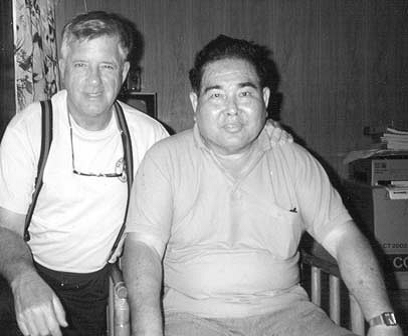
Bilimon Amaron, whose eyewitness account is widely considered to be the most important of the Marshall Islands witnesses, relaxes in the recreation room of his home in the Marshalls capital of Majuro, circa 1989, with his guest Bill Prymak. As a Japanese hospital corpsman in 1937 Jaluit, Amaron’s ship-board treatment of an injured white man, surely Fred Noonan, accompanied by an American woman the crewmen called “Meel-ya,” is legendary among the Marshallese. (Courtesy Bill Prymak.)
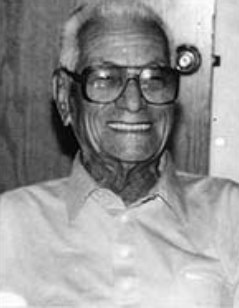
Robert Reimers, the top businessman in the Marshall Islands in 1991, told Bill Prymak that the Mili Atoll landing of Amelia Earhart in 1937 was common knowledge among his people. Reimers passed away in 1998.
For more on TIGHAR’s long, inglorious history of investigations into the Earhart disappearance, please see my March 9, 2018 post, “Les Kinney joins ‘The Truth at Last’ conversation, Shreds TIGHAR’s latest false Earhart claims,” or click here for results of a complete search of this blog.
Reineck appeals to Bill Clinton in 1997 letter
In more than 36 years on the Earhart story, it’s not uncommon to hear the uninformed, naive and even well intentioned ask whether others or I have sent letters to current or past presidents laying out the stark, undeniable facts in the Earhart case and appealing — even demanding — that the truth be finally publicly released and the so-called “great aviation mystery” finally be put to rest.
Firmly convinced of the sacred cow status of the truth in the Earhart matter and equally certain that any such letter would be immediately picked off by screeners and never be seen by anyone higher than a GS-12, I’ve not bothered wasting my time. Others, however, could not be so dissuaded. Retired Air Force Col. Rollin Reineck, well known to readers here, was especially active in this regard, and actually drew a response from an official at the Office of the Assistant Secretary of Defense to a letter he wrote to Bill Clinton in June 1997. For more details on this, see my Aug. 16, 2021 post, “Reineck’s 1997 Earhart plea to Bill Clinton rejected: ‘Our tax dollars at work in Washington.’ ”
Reineck’s June 1997 letter appeared in the March 1998 edition of the Amelia Earhart Society Newsletters and is presented below in its original format; inserted photos are mine. You can get a larger, clearer image by left clicking on each page.
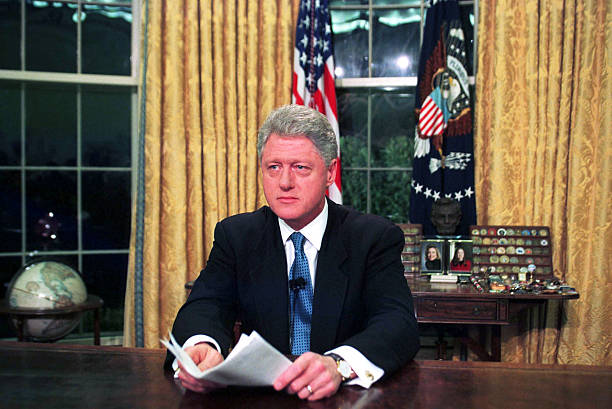
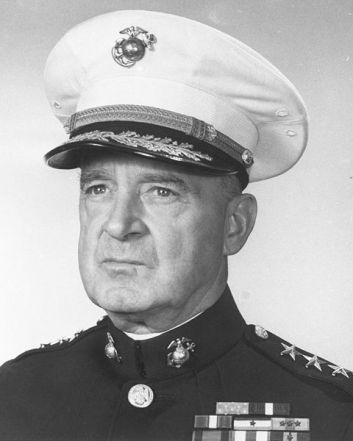
General Alexander A. Vandegrift, eighteenth commandant of the U.S. Marine Corps, confirmed Amelia Earhart’s death on Saipan in an August 1971 letter to Fred Goerner. Vandegrift wrote that he learned from Marine General Tommy Watson, who commanded the 2nd Marine Division during the assault on Saipan and died in 1966, that “Miss Earhart met her death on Saipan.” (U.S. Marine Corps photo.)
(Editor’s note: No. 8, the Earhart-at-Weihsien, China civilian internment camp claim by Reineck was later proven to be absolutely false by Earhart researchers Ron Bright and Patrick Gaston. The telegram was actually sent from the Weihsien Camp by a man named Ahmad Kamal, a close personal friend of George Putnam.) For a complete rundown, please see my Jan. 3, 2017 post, “Weihsien Telegram: Another sensation that fizzled.”
For much more on Rollin Reineck’s attempts to break down the stone walls Washington long ago erected around the Earhart case, please see my Jan. 28, 2020 post, “Rollin Reineck’s 1990s Earhart work bears fruit: Hawaii senator pledges to open secret Earhart files,” and “Senator Inouye’s Earhart legislation would ‘declassify any records that have been classified’” of Feb. 11, 2020.
The search for the missing Earhart plaque
In early June 2023 I received an email from a lady I had never heard from before, who had a unique story to tell. Boldface mine throughout.
Saturday, June 3, 2023
Helloooooooo Mike,
Recently, I discovered thanks to our congressman visiting the Switlik Parachute company in Trenton [N.J.], that back in early 1937, Amelia tested a parachute at the Switlik parachute test tower. I’m attaching the only photo I could find.
A commemorative plaque was place where the tower was for Amelia, when the farm was sold to Six Flags Great Adventure, in Jackson, N.J. I have now lost my mind trying to get onto that area . . . to see if the plaque is still there. No one knows, some say it’s gone. And, there is no direct access to that area to try to find it. Not even the local historic societies.
Were you aware of the jump? There is a video if you google in the info. Stay good. I’m still hot on the trail of trying to find the plaque.
Khadi Madama
Later that day, Khadi, who lives in Toms River, N.J., sent this:
Yes, Yes, nice to meet you too, a fellow radio/TV person.
I will keep you informed my new friend. Up here in the wilds of the Jersey Shore I go on many explorations of old ruins etc. I can’t let Amelia’s plague just go off to some old pile of rubbish in a basement somewhere. Will keep you informed and thank you ever so much for keeping her spirit alive. I was just able to acquire a certified tiny little piece of her [Lockheed B5] red Vega.
Khadi
Lady Khadi Madama (yes the title is real)
Here’s the link to the brief YouTube video: Amelia Earhart at Switlik Jump Tower.

Recently Khadi sent the story of her search, and I thought some might enjoy it.
“In Search of Amelia Earhart: Missing Again!”
By Khadi Madama c. 2024
This isn’t about a flight, but it is about a plight, to locate an important piece of legacy. Yes! That’s right. This time, however, the search isn’t about Amelia’s great Electra plane that various treasure hunters like to infer they have found because it generates buckets of money for them to continue the charade. This isn’t about Amelia’s Flying Laboratory, but instead, a search for a plaque commemorating another historic event performed by Amelia Earhart and about which most people are unaware.
I’ve been on a flight mission not up in the sky, but more of flight of fancy at this point to try to locate an object of historic value that has simply disappeared and with it, one of Amelia’s stories. My research has taken me through turns and twists, erroneous clues, uninterested people and up against some pretty thick walls of indifference. It seems that people are more interested in Amelia’s plane and her aviation notoriety, than they are interested in her as a real life person.
The Backstory
In the fall of ’23, I read about a store right here in New Jersey that was making parachutes and parachute gear for the war effort back in the day. Switlik’s is still in business today, I learned, when an email arrived from Congressman Andy Kim, who was my congressman at the time. Andy loves getting around to speak with constituents and to show support whenever he can. I loved reading the article and was making plans to go out just to visit the iconic store for fun. I had no need of gear, as I had no intention, whatsoever, in jumping from my third-story gabled roof. As I read the article, I discovered that Switlik’s was famous for erecting a parachute tower to test their gear and to provide a training area for local military parachute training. Stanley Switlik owned about 800 acres of farmland, which was known back in the 1930’s as Stanley’s Farm, or Switlik’s Farm. There are also two small lakes known as Switlik’s Lake.
The parachute tower was erected behind the barn which was just behind the family’s large farm home, now referred to as “the old mansion.” The “old mansion” and its barn are still standing on what is an out-skirt of the vast land mass known as Six Flags Great Adventure. The buildings are there, still used in current times as part of one of the annual Halloween entertainment features, “Fright Night,” but the parachute tower was demolished in 1935 just six months after it was built.
A Little History
In the early to mid 1930’s, Amelia Earhart married famous publisher George Palmer Putnam, who was also pivotal as her publicist, to look for opportunities to keep Amelia in the limelight. One of those publicity events was to partner up with Stanley Switlik to build a parachute testing tower out on the farm. Next, to set up the press to be there on ribbon cutting day with Amelia on hand to take the first test drop. That was on June 2, 1935.
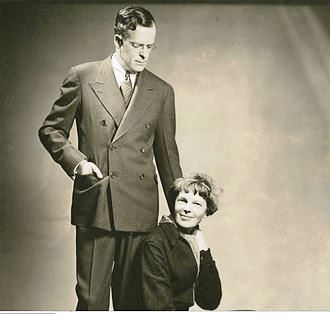
Amelia poses with her husband, George Palmer Putnam in a 1935 photo that must have raised some eyebrows, given the idea, popular among some, that their marriage was simply one of convenience. Putnam was actively engaged in the search for Amelia for years, even after he had her declared legally dead in January 1939.
Amelia, strapped into make-shift transport swing and down she came and landed safely and with a smile. She gave Switlik’s Parachute Test Tower her endorsement for military training in the bucolic south west area of New Jersey. She was very familiar with Switlik’s gear and clothing which she seen frequently in her aviation circles.
Local Lakehurst Naval Base had a paratrooper training academy and they used Switlik’s Tower for their parachute training as well. However, as things go, it wasn’t long before the need for the tower dwindled and in November of that same year, the tower was demolished. And on that very spot, a commemorative plaque honoring Amelia was placed to mark the occasion.
The question is, what happened to that plaque and why doesn’t anyone seem to know what happened to it over 85 years ago. That’s what I wanted to know when I went, with my expedition partner out to try to find it and the twisting and turning deep dive research I did to get to the bottom of this mystery. Let’s just say that at the bottom of the mystery lay a very big question mark, and a frustrating one at that!
The Tower Timeline
June 2, 1935: Publicity event featuring Amelia Earhart’s descent from the tower to test its integrity and to give it an endorsement.
November 25, 1935: Switlik Tower is demolished and sold as scrap metal. A commemorative plaque is placed on the spot by the state of New Jersey.
1973: Thirty-eight years later, Great Adventure purchases the Switlik Farm (800 acres).
* The Switlik Tower was already gone when Great Adventure purchased the acreage.
1974: Great Adventure opens its amusement park to the public in Jackson, N.J. (originally Prospertown).
[Editor’s Note: Six Flags Great Adventure is an amusement park located approximately 20 miles southeast of Trenton in Jackson, New Jersey. Owned and operated by Six Flags, the park complex is situated between New York City and Philadelphia and includes a water park named Hurricane Harbor. It first opened to the public as simply Great Adventure in 1974 under the direction of restaurateur Warner LeRoy. Six Flags acquired the park in 1977. The park is located right off of Interstate 195 and is along Monmouth Road (County Route 537). (From Wikipedia.)]
My List of All Principles Contacted and findings about possible location:
Great Adventure
An On-Location Survey of Possible access to the known area:
Impossible to access. Unknown non-landscaped wild terrain; chain link fences and No Trespassing signs. Other possibilities are under construction and security cams.

Lakehurst Naval Base: No one returns telephone calls or answers emails. Lakehurst used the tower for training so it should be a good source but it also takes months to get clearance onto the base if you can even get a call back.
Lakehurst Historical Society: The curators had never heard of such a plaque or Amelia at Switlik Tower
Assunpink Preserve: An area very close to the possible location. No one answers, calls back and can’t leave a message.
Switlik’s Store: No one knows anything about the plaque and no one gets back to me with any historic information. They have stated that the plaque is not with them at the store.
Former Security Great Adventure Security Staff: No one returned my call or email even though I used a referral name.
New Jersey Historic Trust: Either their email addresses aren’t working, or they don’t respond to email, or if any did answer the phone or email, do not know anything about the plaque and there are no records of it.
Cedar Fair, Inc: This company answered me back very courteously; however, they assured me that at this time there are no definite plans to merge with Six Flags Great Adventure which means that it isn’t they who are doing the construction currently being undertaken at Six Flags G.A.
Ocean County Cultural & Historical Commission: No response to phone or email.
My Unanswered Questions:
1. Did someone from Switlik’s take the plaque on the day that the tower was demolished unbeknownst to the Switlik family?
2. Did someone from the demolition crew take it as a souvenir or to sell as scrap metal?
3. Is it covered over by time in the undergrowth behind the barn at 6 Flags Great Adventure?
Where Do These Unanswered Questions Leave Me?
After numerous emails with Six Flags Great Adventure, in conjunction with their historic department, I can check them off the list as they have no idea that any commemorative plaque ever existed. This sent me down memory lane, a place that also proved completely fruitless, as I tried to construct a timeline of events and the contacts along my search pathway. Six Flags Great Adventure. Was very courteous, however, in trying to help me find out some information. I believe them, as they mention Amelia’s test and have a curated historical section on their website. If the plaque were somewhere visible, they simply would have told me.
What Happens Now?
I have decided that the plaque was either stolen decades ago or is still hidden in the thickets in the still fairly un-landscaped wooded areas that surround Six Flags. Hence, I’ve emailed back to their wonderful concierge at guest relations who has been my go-between. I’ve sent my findings and I have asked and suggested that a new historic or interpretive sign be erected by Six Flags Great Adventure, not where the tower was because they is off limits to the general public and therefore no one would be able to enjoy seeing it, but somewhere at the entrance to Six Flags Great Adventure before entering the park.
I explained that it would make a wonderful publicity event for the upcoming season especially now with the trending news of the possibility of finding Amelia’s plane. I’m waiting back for a response which the concierge said she would follow up with me.
I’ll let you all know what happens . . . and just hope that something fun, does happen!
“No picture of the missing plaque exists anywhere, hence my exhaustive research and need for this article,” she wrote in a Feb. 18 email.
Khadi Madama bio
Khadi Madama, also known as Lady Khadi Madama, is a produced playwright, former Official Mystery Writer for the Mid-Atlantic Center for the Arts for Cape May’s annual Victorian Weekend, writing the Violet Rose-Parlor Mysteries 1991-1995. Her screenplay Tryst With Destiny: A Ghost Story has won the Feature Script Competition in the Jaisalmer International Film Festival for 2022 and received Honorable Mention and selected to be read at the Wiki Film Festival 2022. She has also achieved “red listed” semi-quarter finalist status for her Jade Charme: The New Diamond Series book op to movie competition with Coverfly. Between 1996 and 2017 Khadi was the writer and co-producer of three instructional cable TV series on TV 21 NJ.
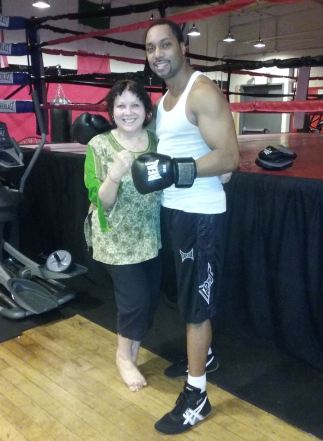
“I don’t usually post things about my other life — the world of boxing and martial arts,” Khadi writes. “Yoga and Chinese Martial Arts have taken me to some interesting places and being able to use my knowledge and training with fine boxers and coaches at one of the world’s most famous boxing gyms in the world is such a privilege. Here I am with boxing coach Brian Walker from Gleason’s Gym after a class on Pranic Breathing to increase recovery time between bouts.” (Photo from October 2016.)
Update late March 9: “The Historian at Six Flags Great Adventure sent me a letter, keen to solve the mystery,” Khadi wrote in an email. “He said they were going to do an inspection in the appropriate area of the grounds to see if they could find the plaque. If they don’t find it, then I’ll start applying the tourniquets either on them or Lakehurst Naval Base to put a plaque up where it is visible to the general public.”

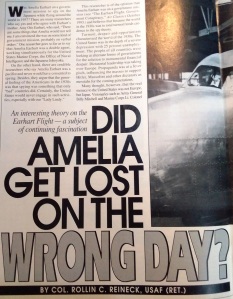
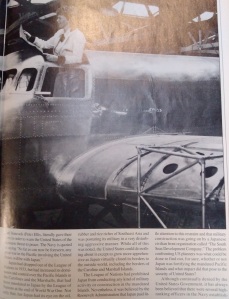


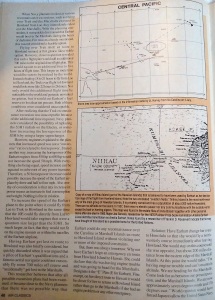

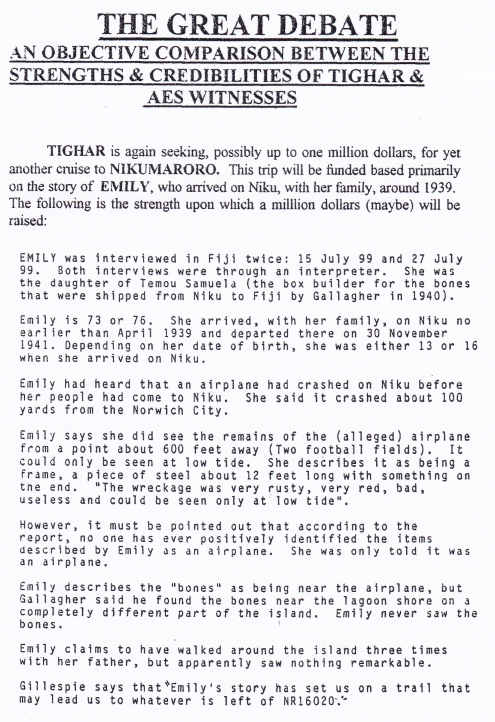
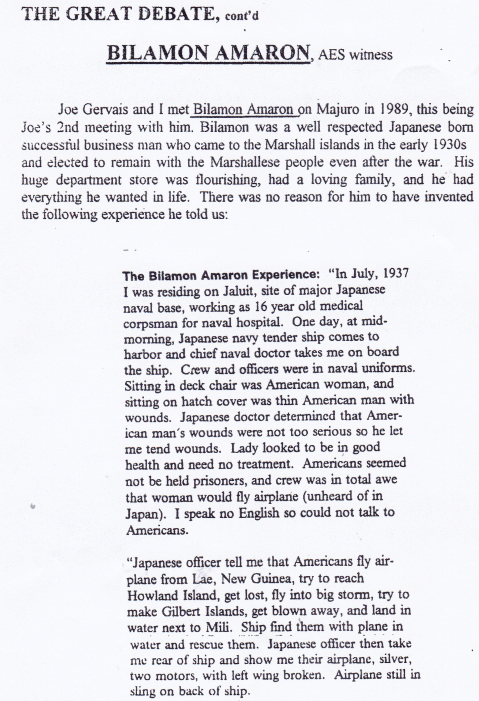
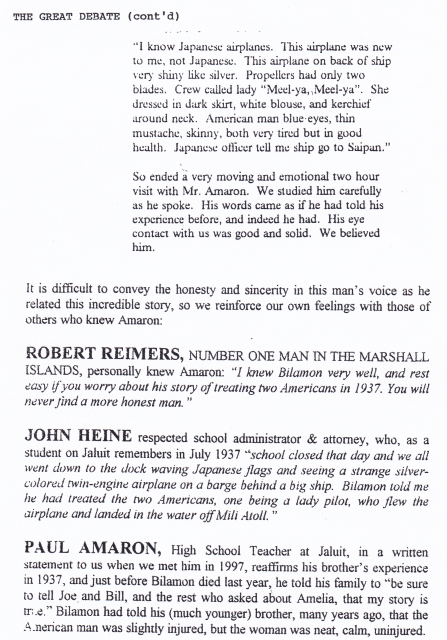
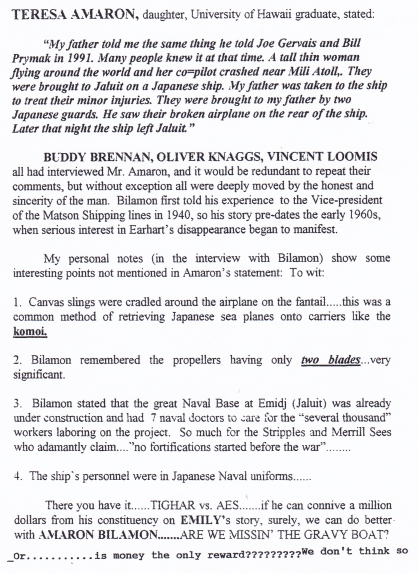
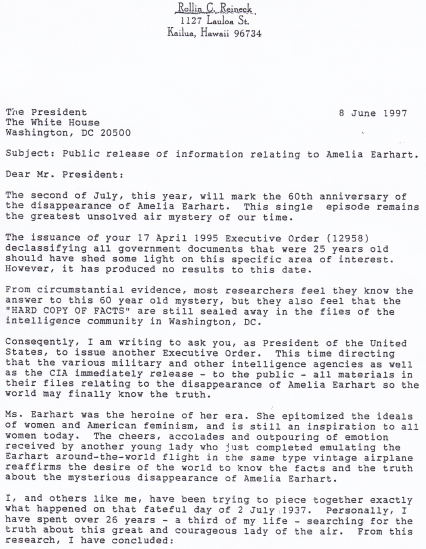
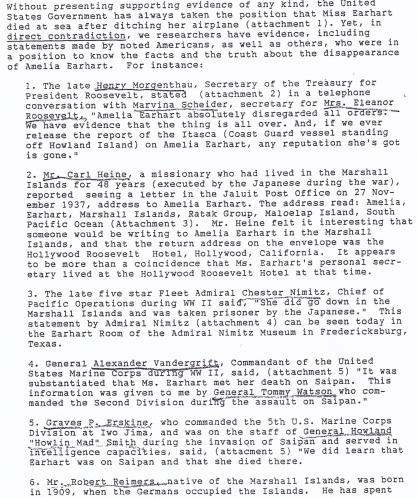

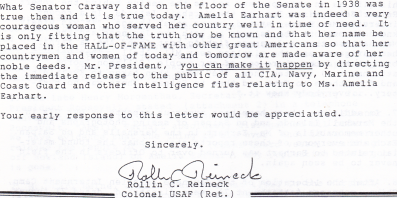


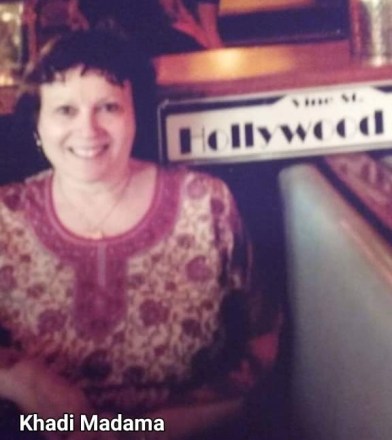


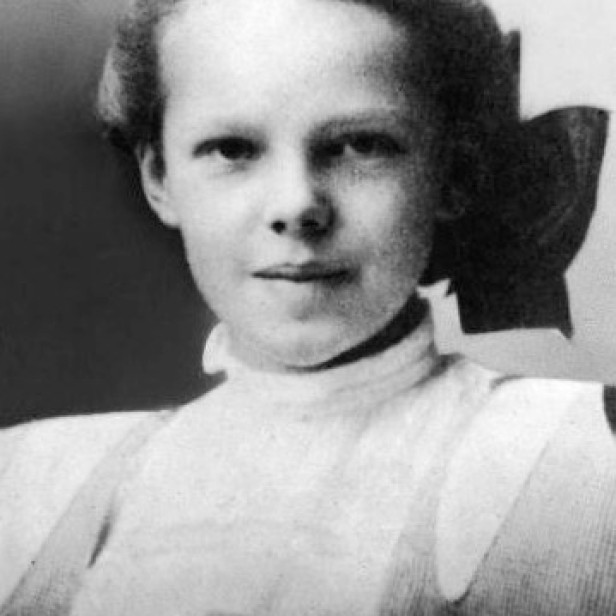
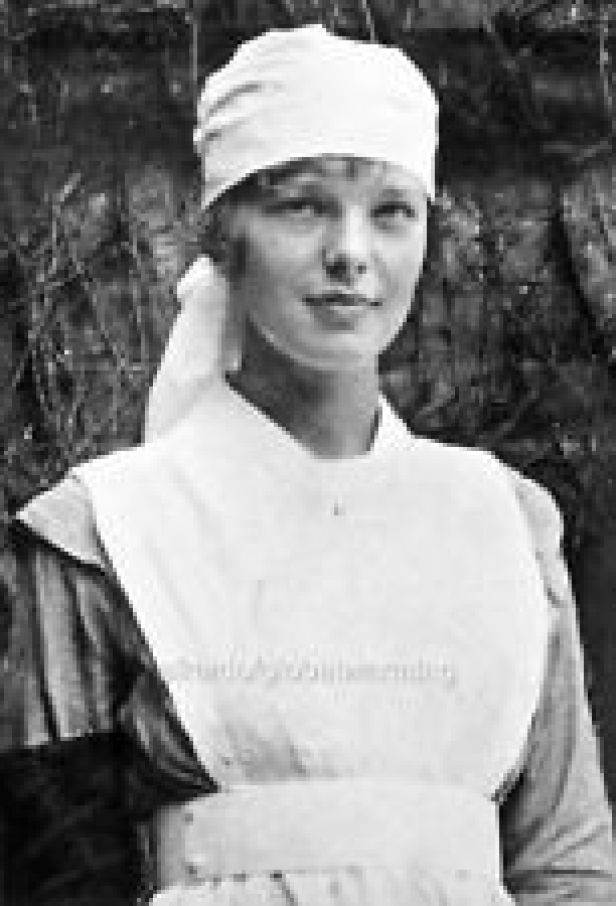

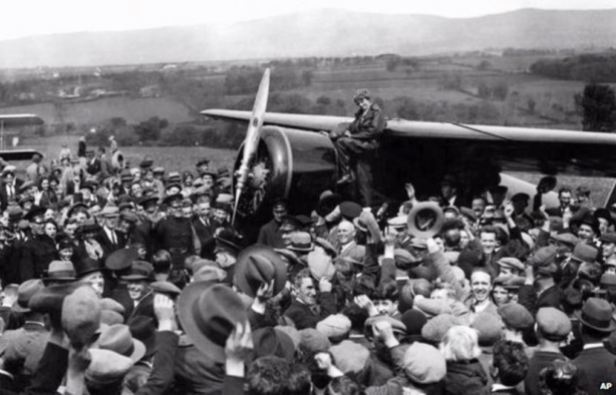




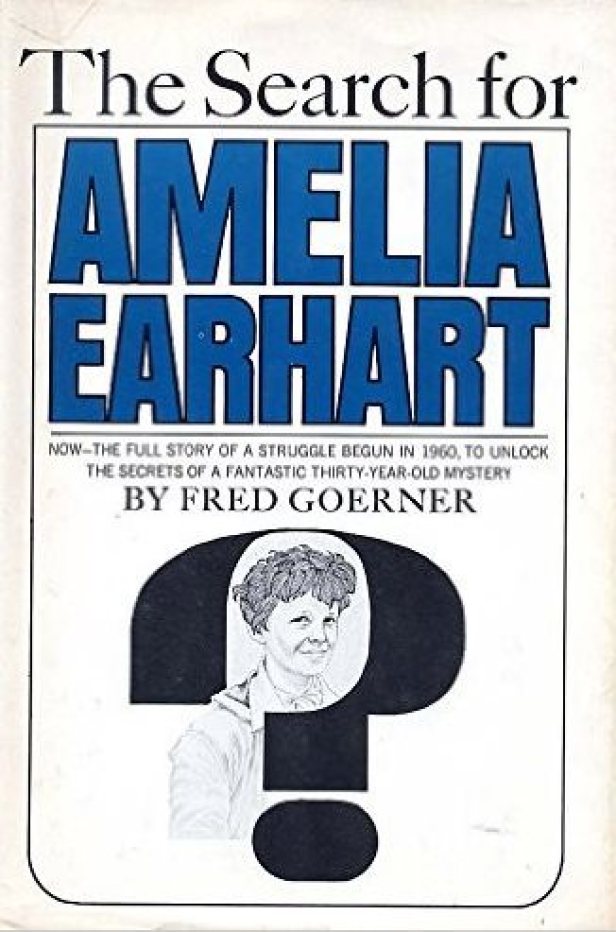





![Fishing boat story 5 This story appeared at the top of page 1 in the July 13, 1937 edition of the Bethlehem (Pennsylvania)-Globe Times. “Vague and unconfirmed rumors that Amelia Earhart and Fred Noonan have been rescued by a Japanese fishing boat without a radio,” the report began, “and therefore unable to make any report, found no verification here today, but plunged Tokio [sic] into a fever of excitement.” The story was quickly squelched in Japan, and no follow-up was done. (Courtesy Woody Peard.)](https://earharttruth.files.wordpress.com/2016/01/fishing-boat-story-5.png?w=616&resize=616%2C352#038;h=352)

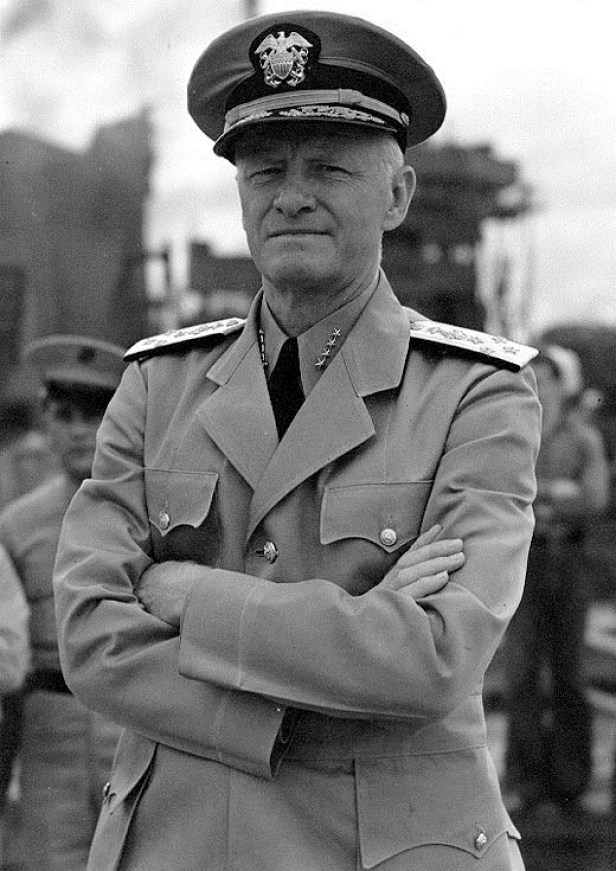







Recent Comments